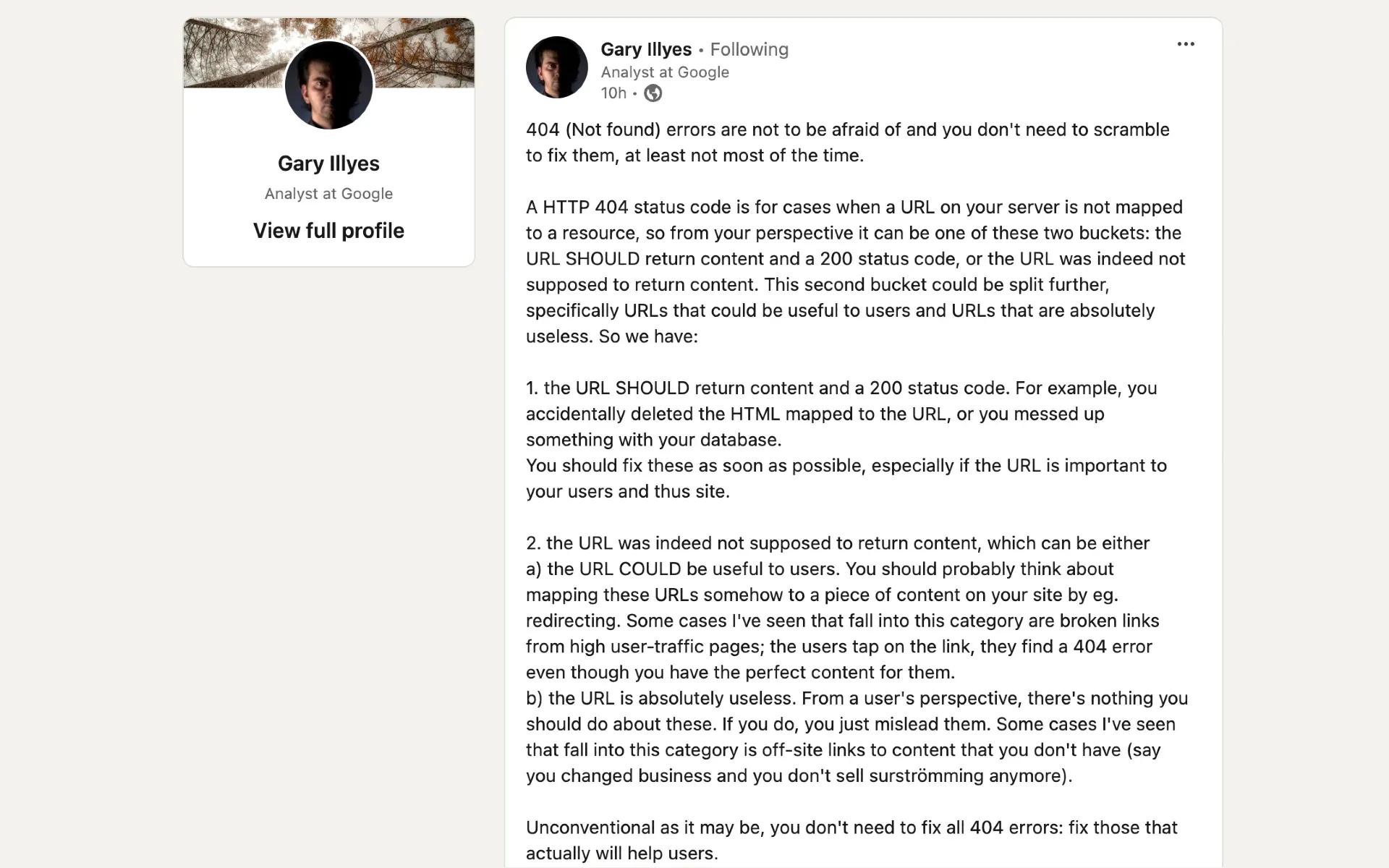Google clarifies when to fix 404 errors
Focus on User Experience, Not All Errors Require Fixing.

Gary Illyes, a Search Analyst at Google, today addressed a common website management concern – the dreaded 404 error message. Illyes' comments, posted on LinkedIn, offer website owners valuable insights into how Google treats these errors and when they should be addressed.
A 404 error code indicates that a web server cannot find the requested web page or resource. However, according to Illyes, not all 404 errors are created equal. He classifies them into two main categories:
URLs that should return content (200 status code): These errors typically arise from technical mistakes, such as accidentally deleting a linked HTML file or database issues. For these URLs, Illyes emphasizes the importance of fixing the problem as soon as possible, especially if the pages are important to user experience.
URLs that were never intended to return content: This category is further divided into URLs that could be potentially useful to users and those that are entirely irrelevant.
For URLs that could be valuable to users, Illyes recommends implementing redirects to appropriate content on the website. This approach prevents user frustration caused by encountering a 404 error when relevant content exists elsewhere on the site. An example might be a broken link on a high-traffic page that points to a non-existent URL. Redirecting this link to the correct content improves user experience.
Ignoring Useless 404 Errors
On the other hand, Illyes suggests that website owners can safely ignore certain 404 errors. These typically involve URLs that point to content that never existed or is no longer relevant, such as links to products a business no longer sells. Fixing such errors does not improve user experience and may even mislead visitors.
Illyes' comments highlight a user-centric approach to website management. By prioritizing the user experience and addressing errors that create dead ends in website navigation, website owners can improve visitor satisfaction and potentially enhance search engine rankings.

